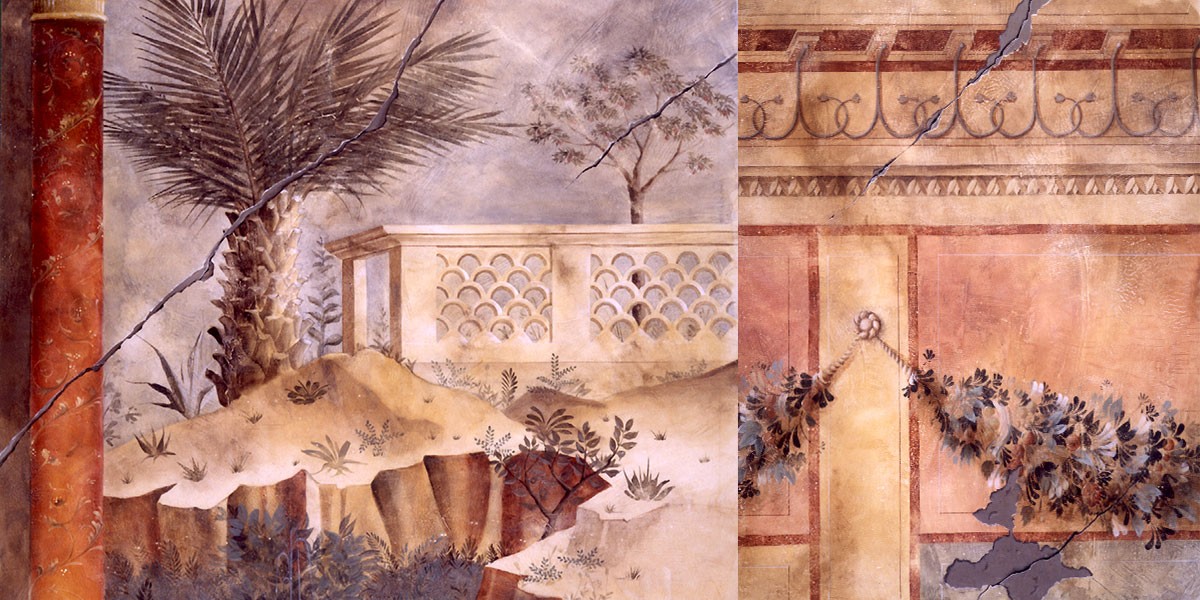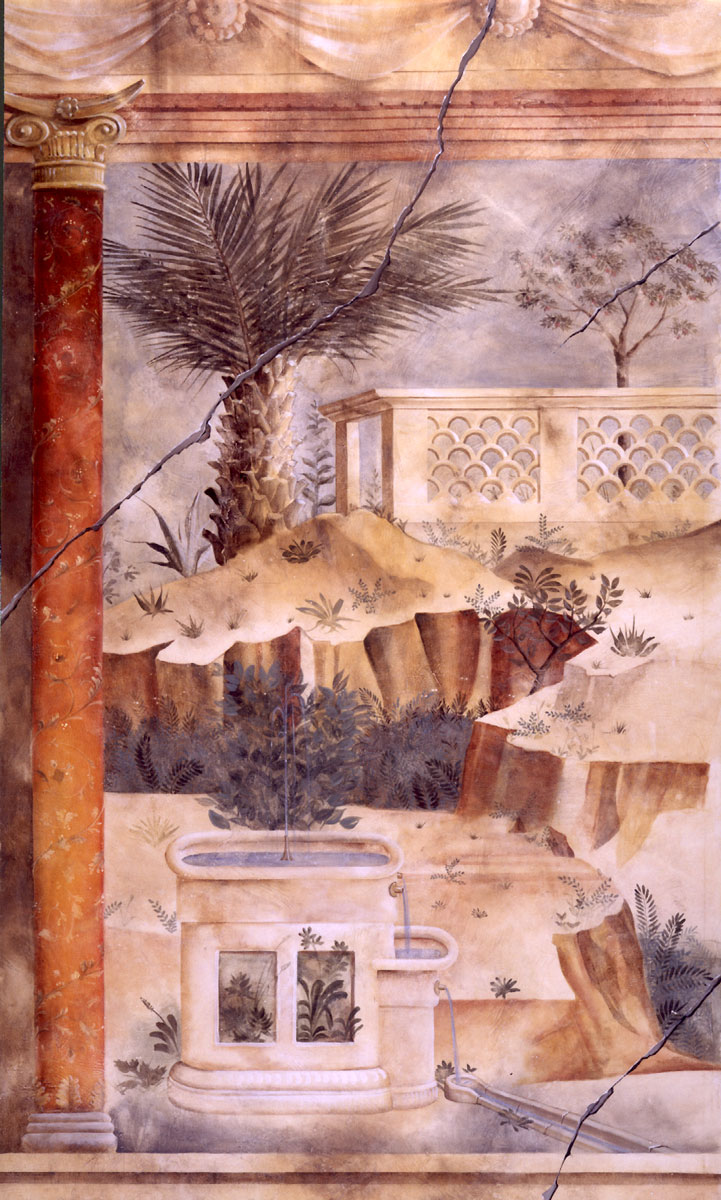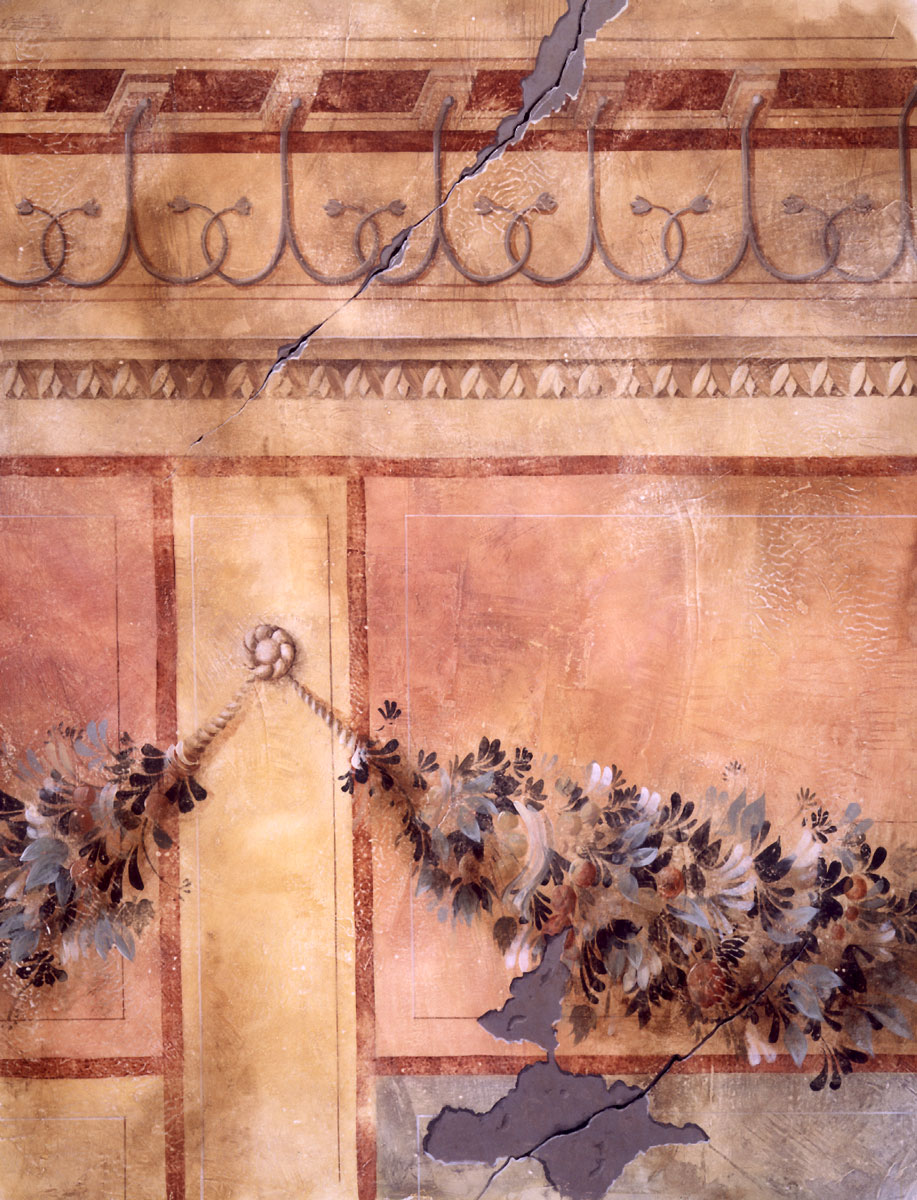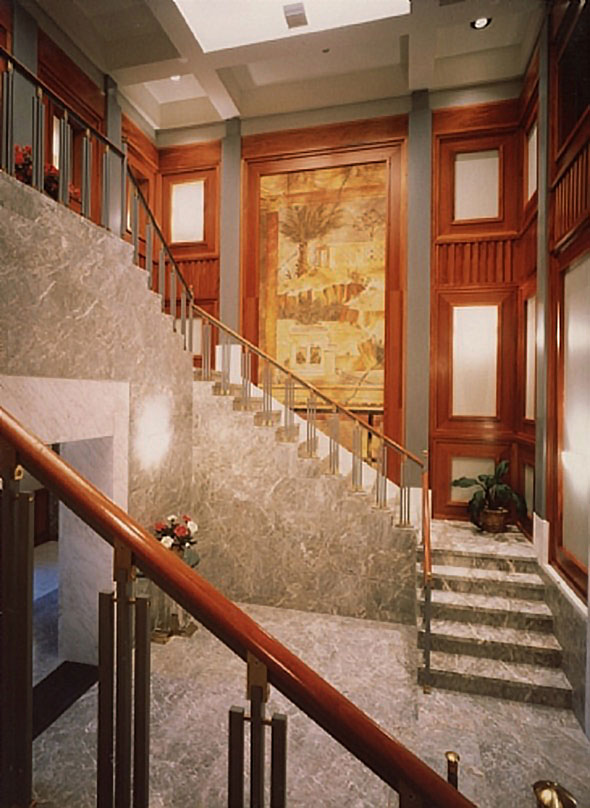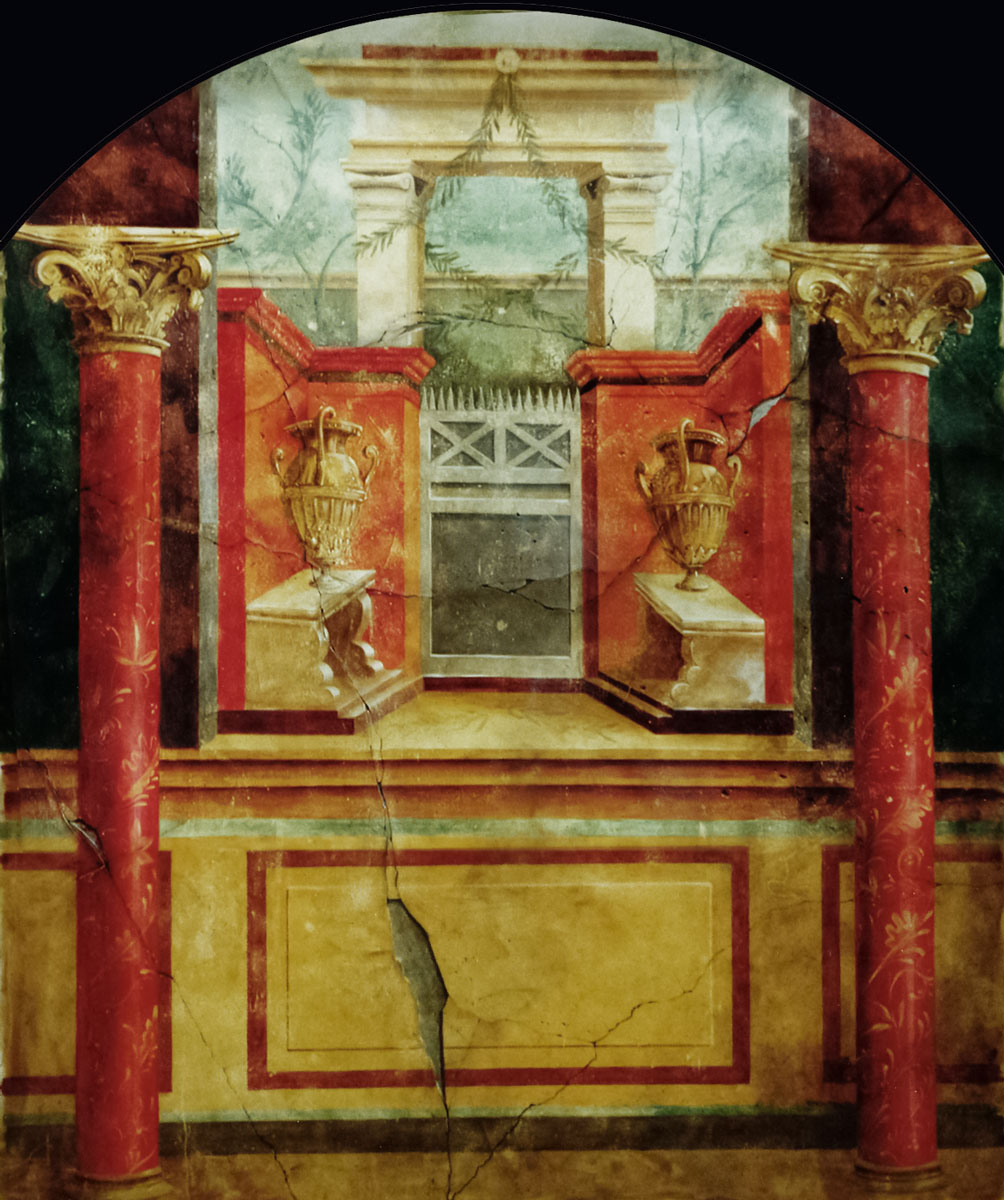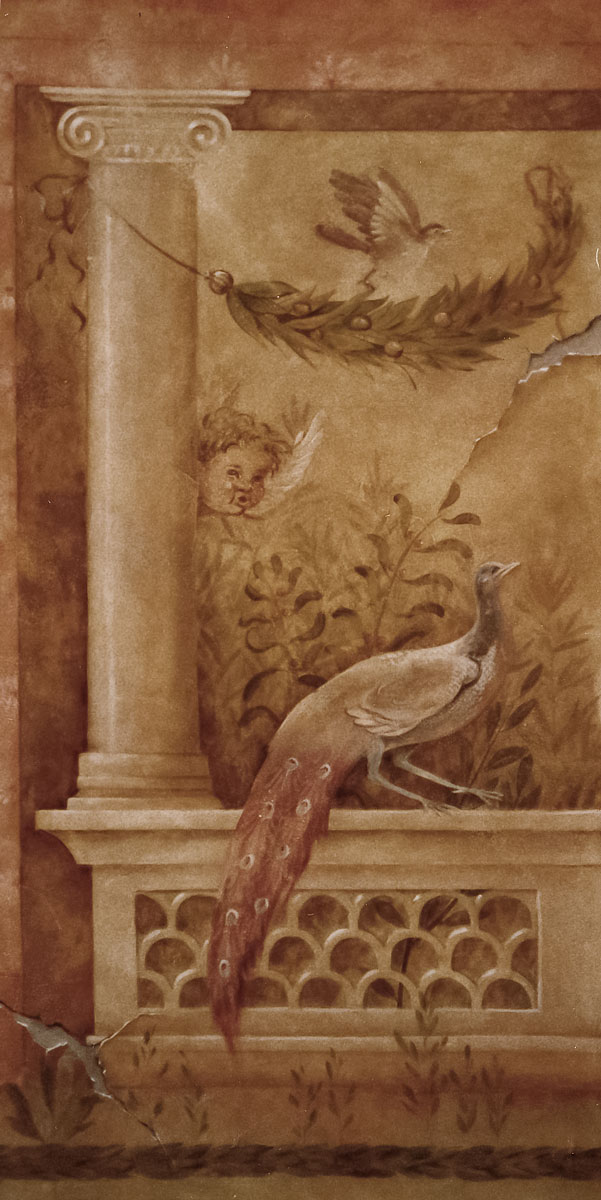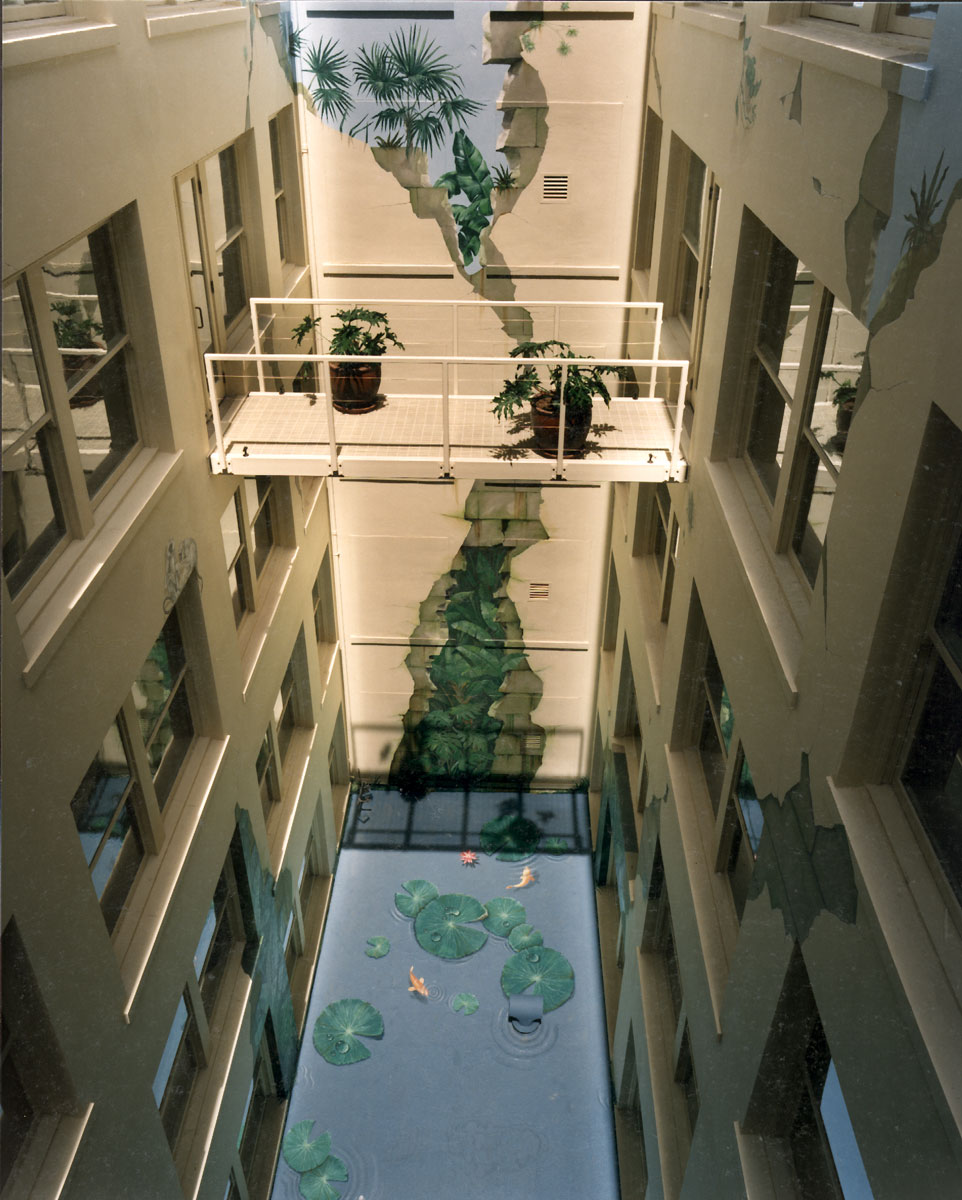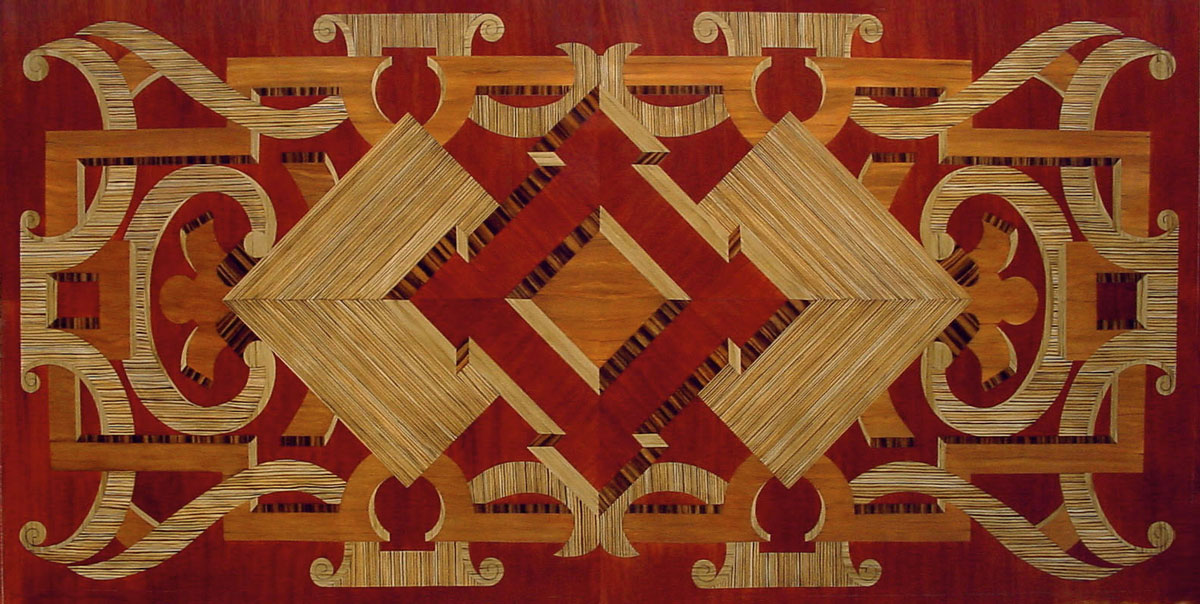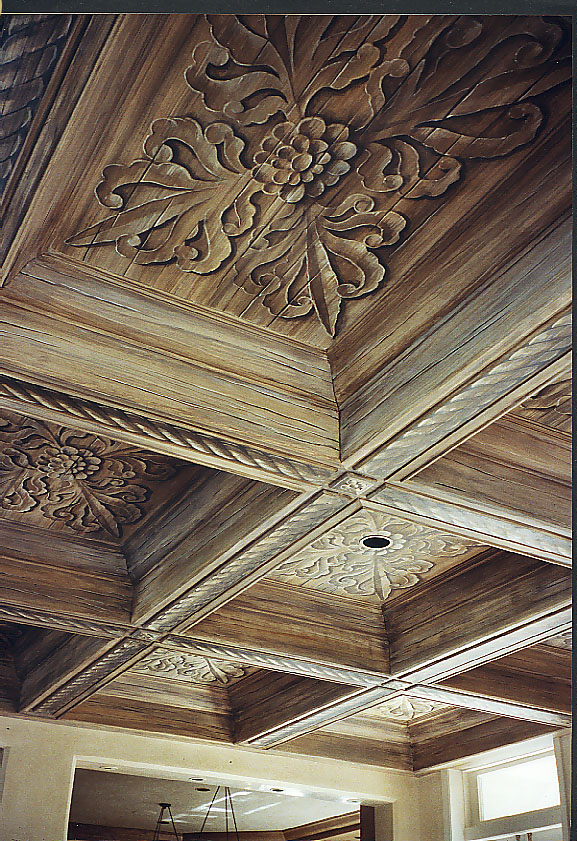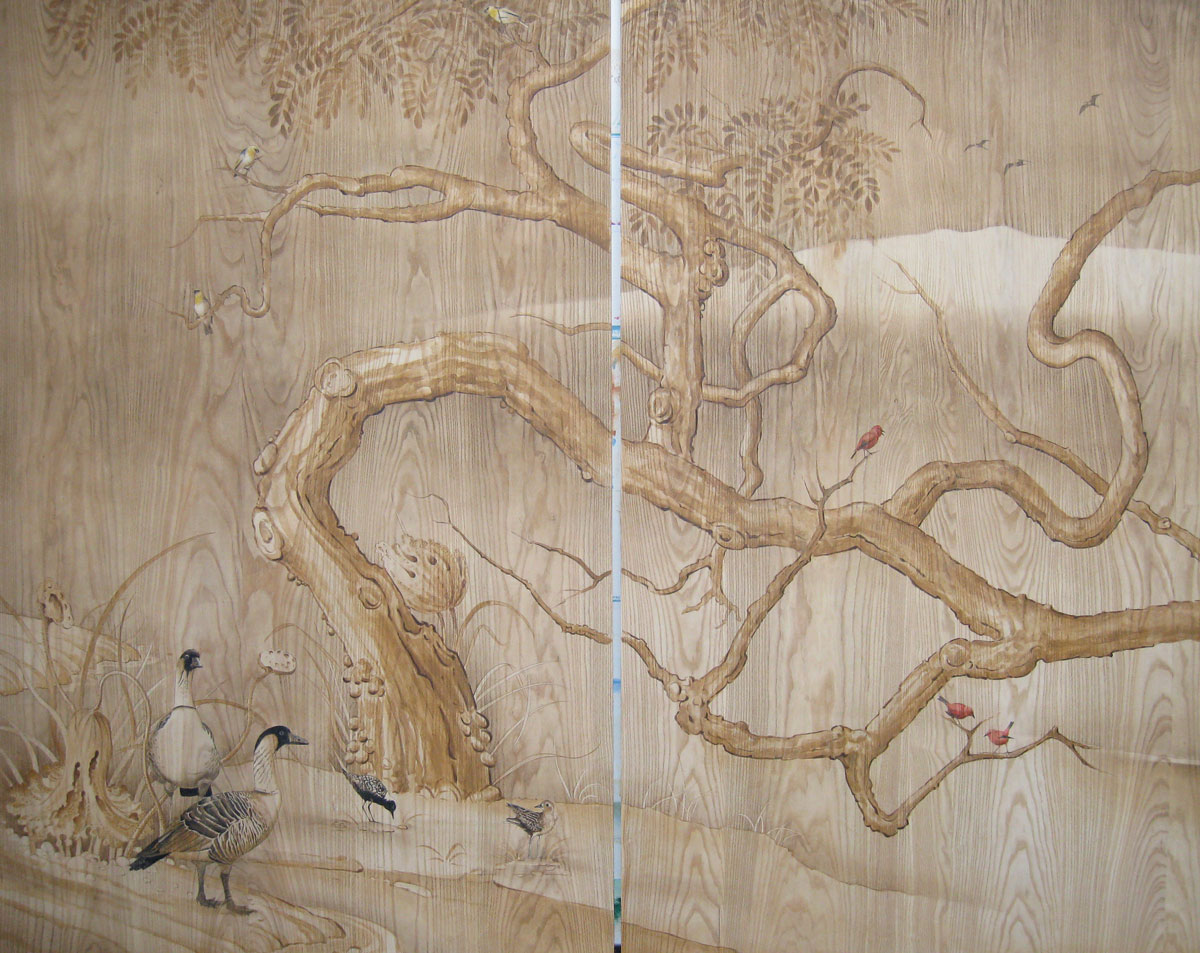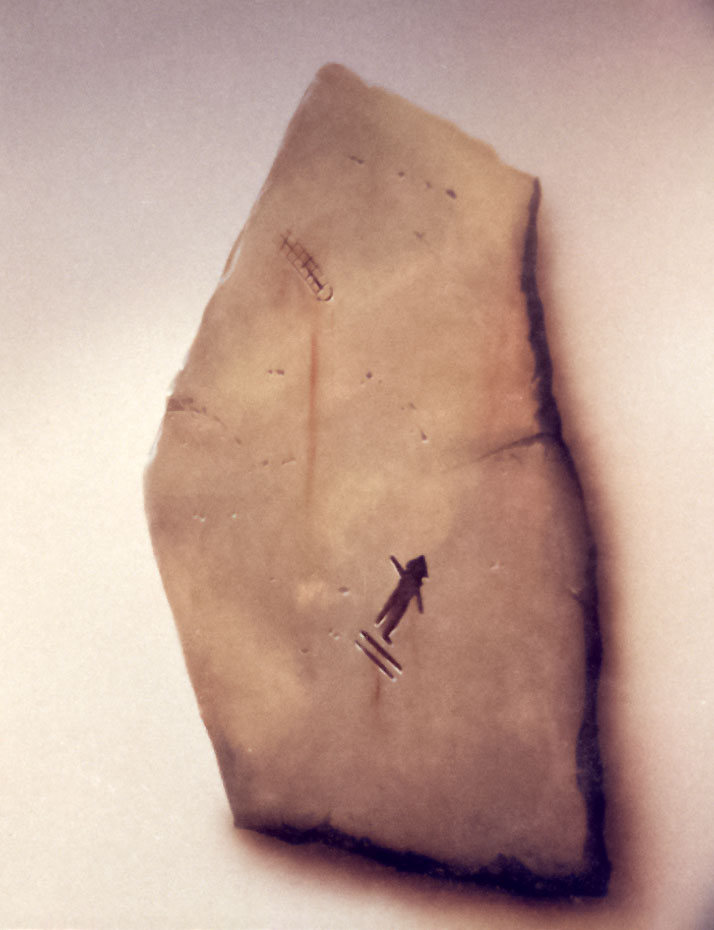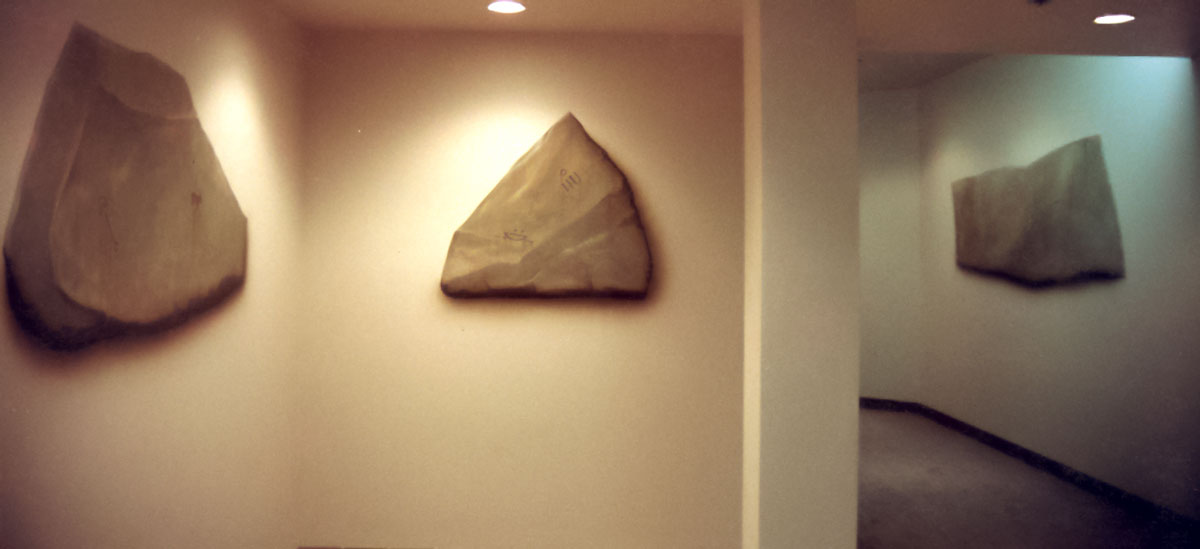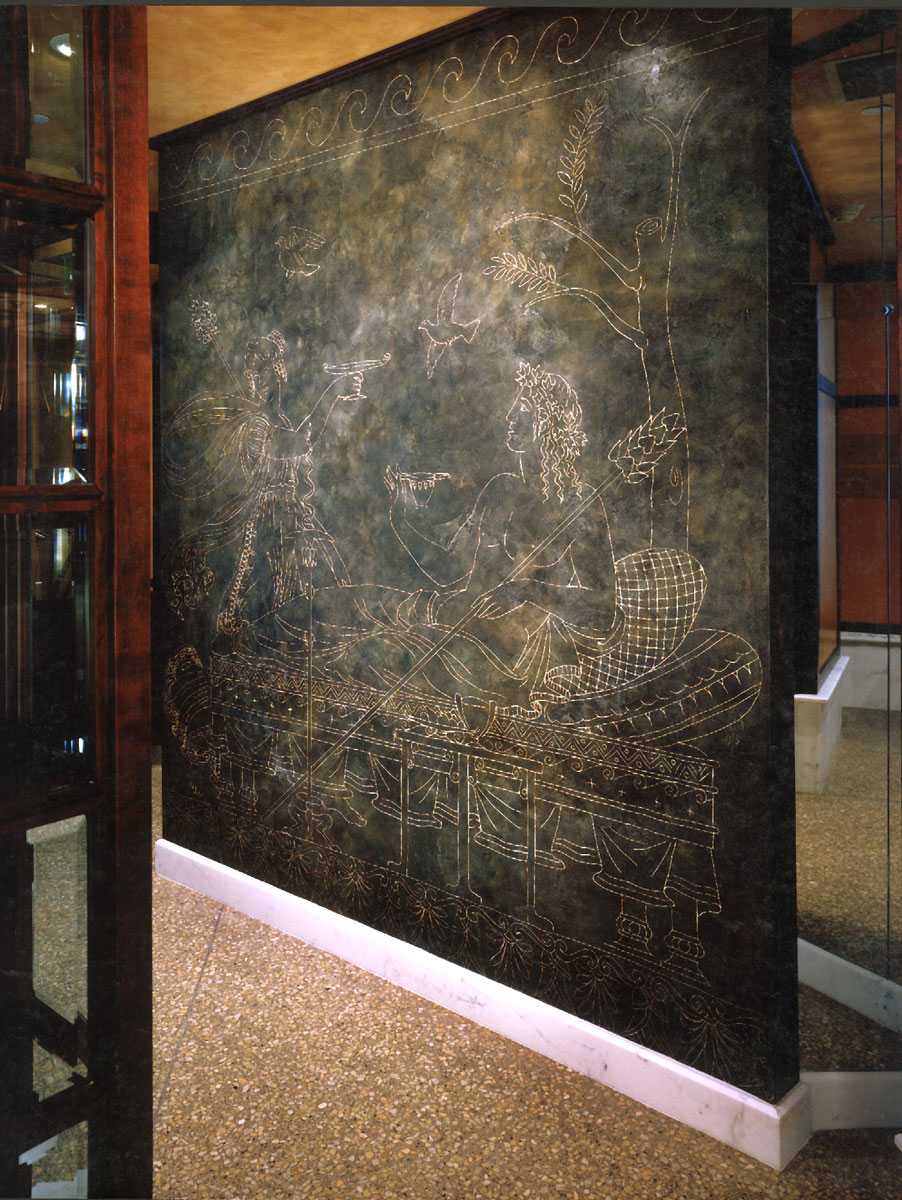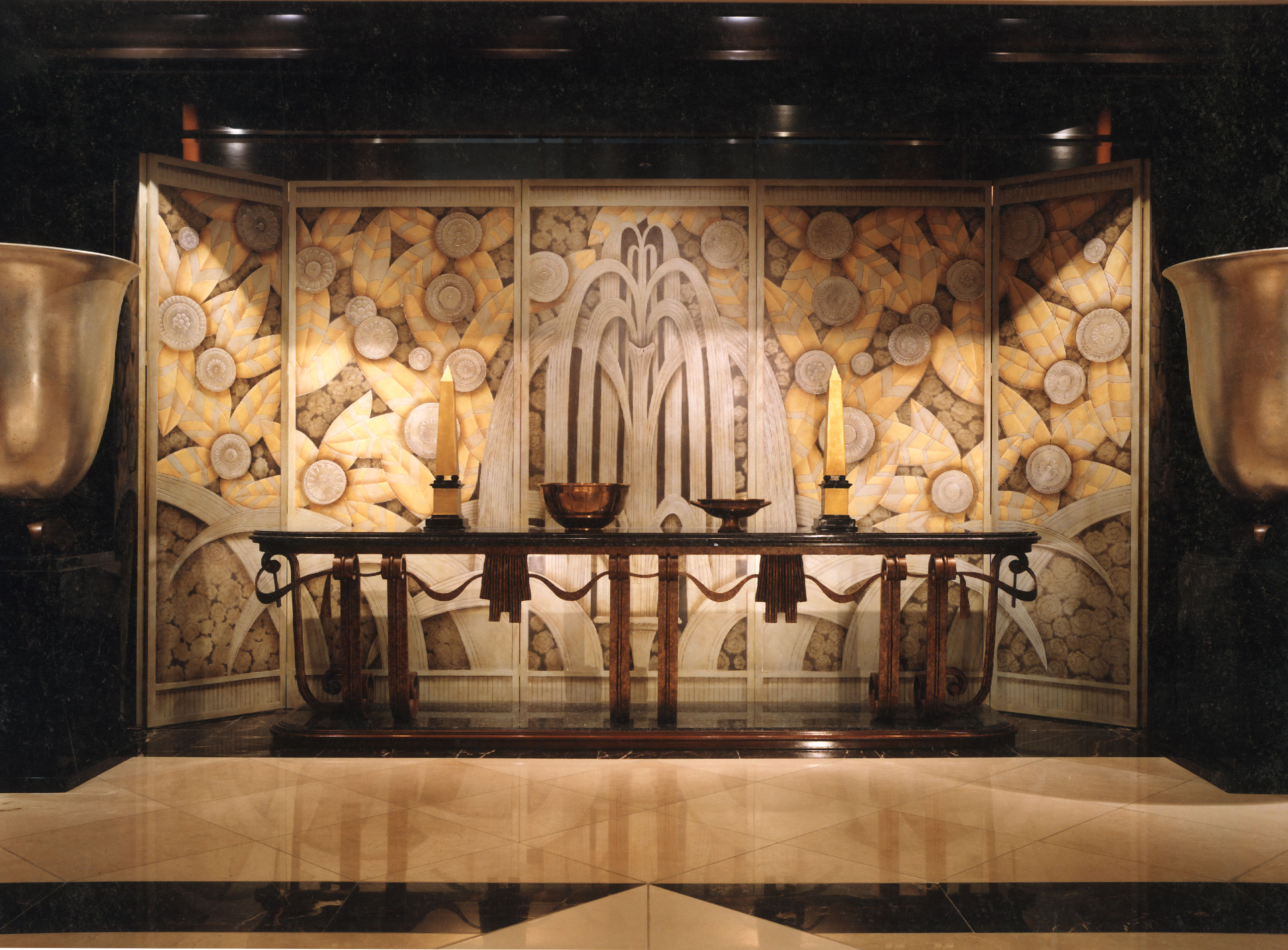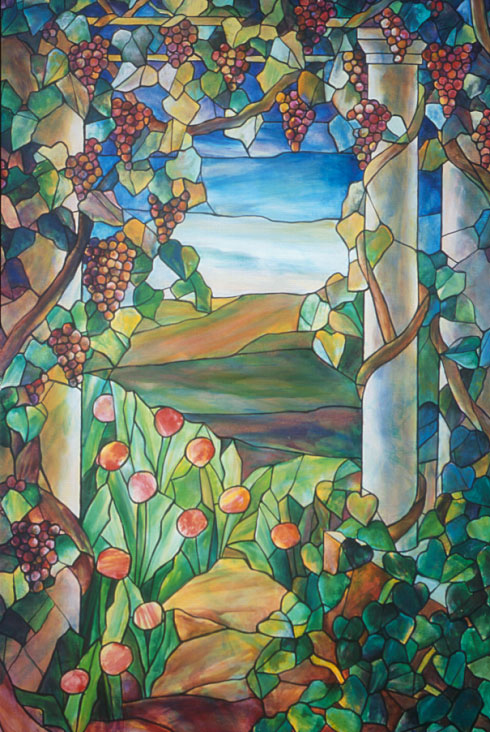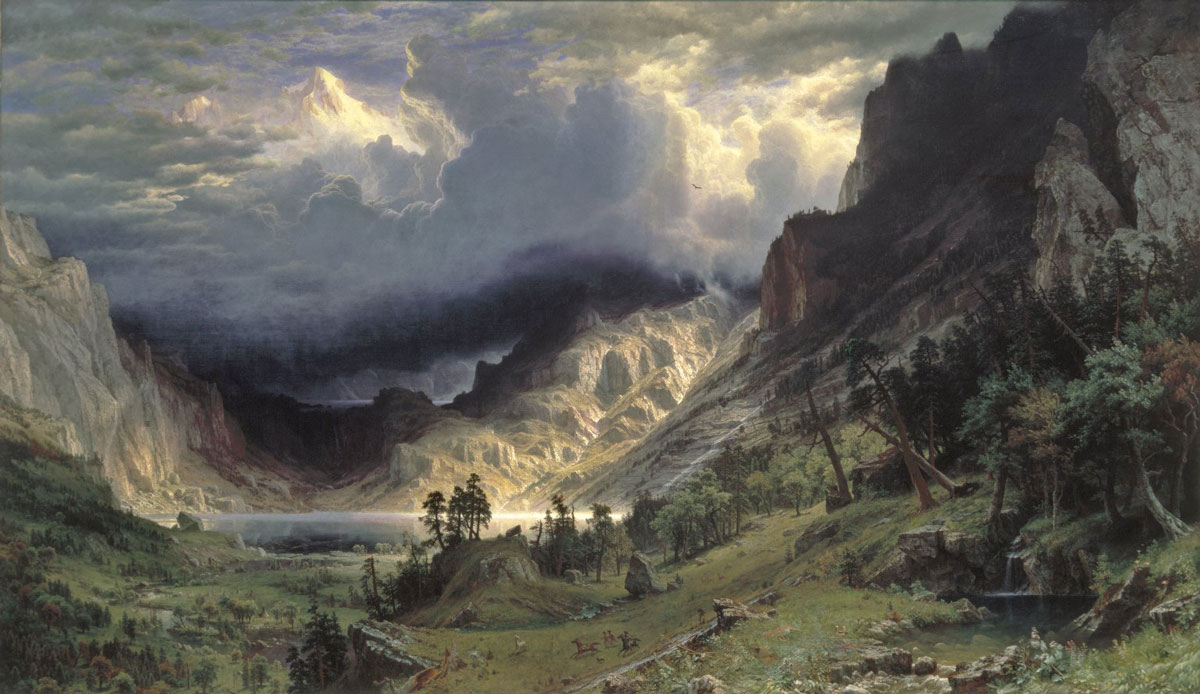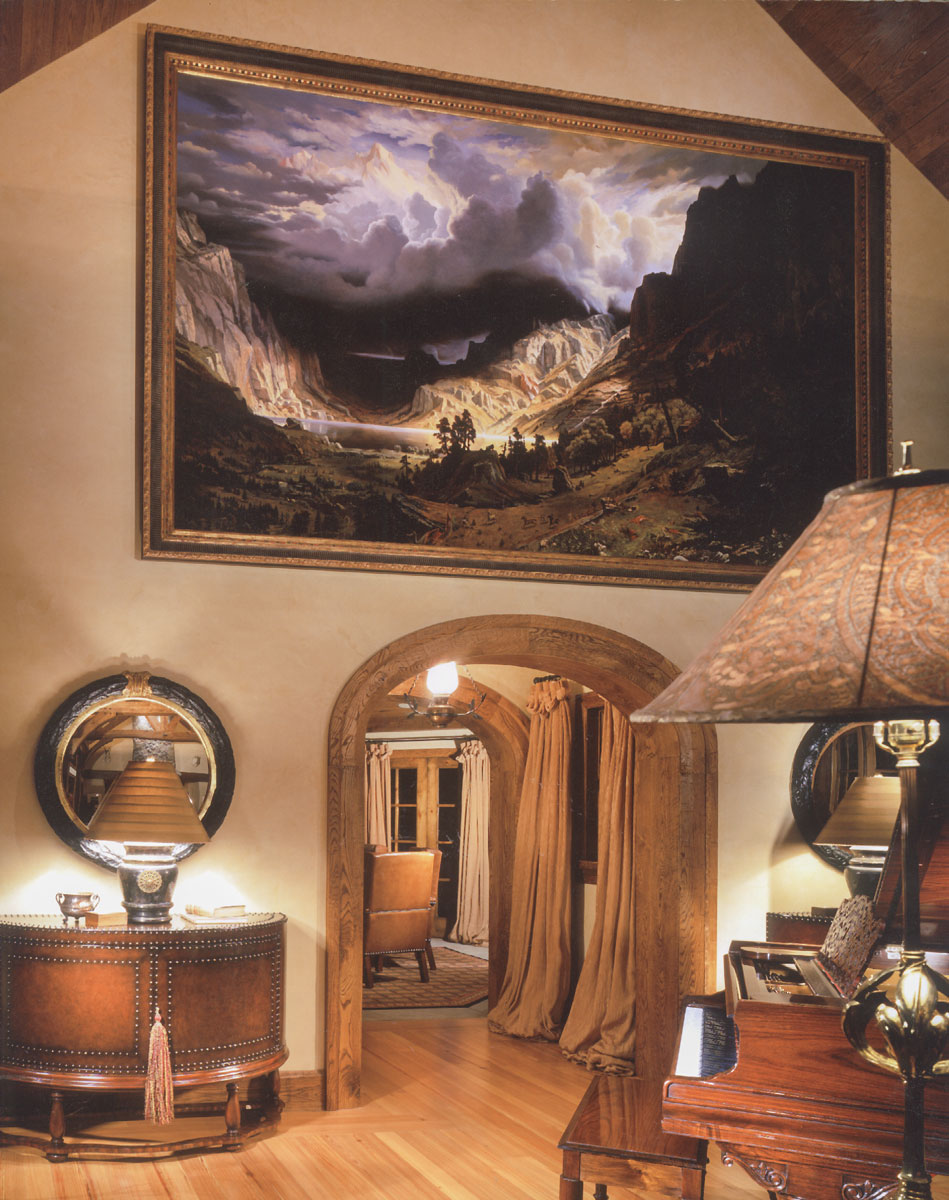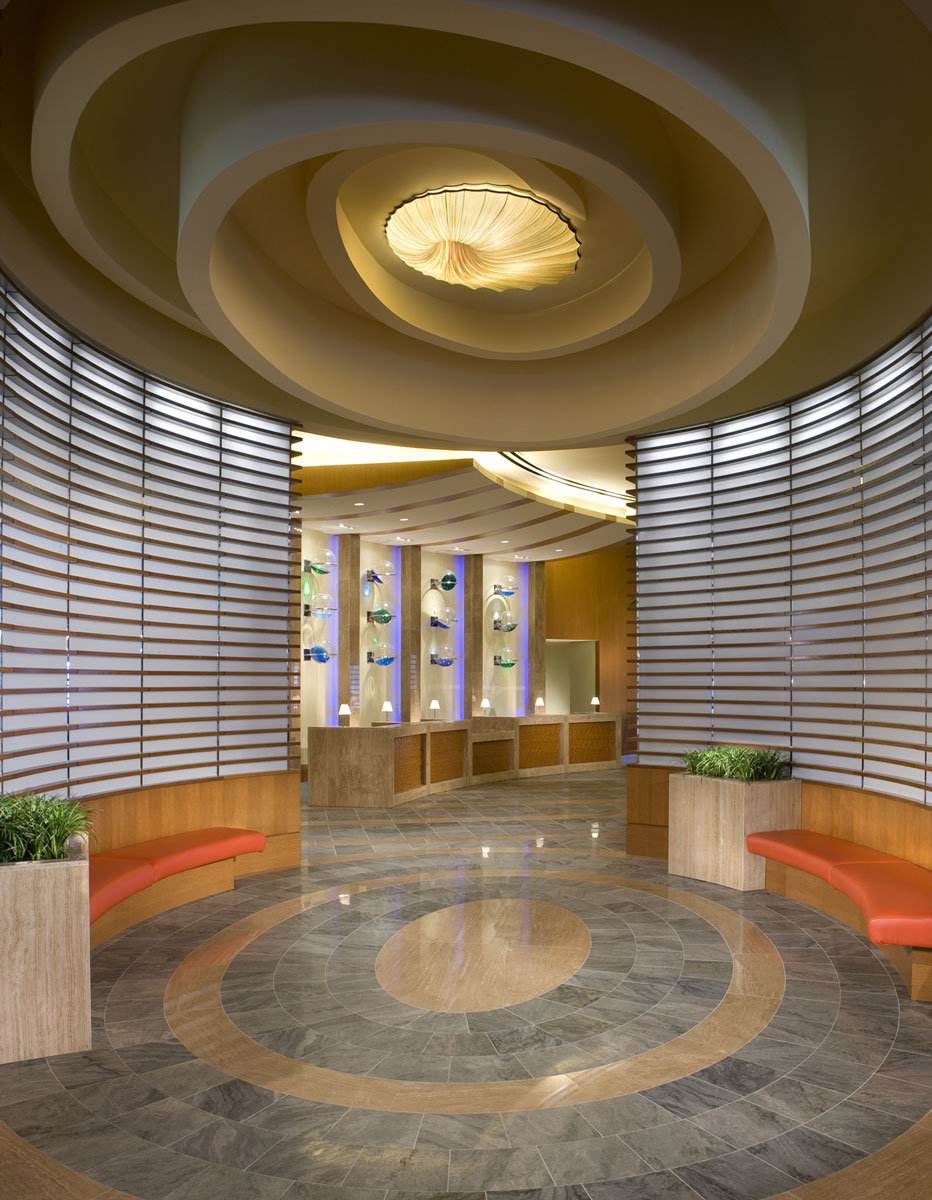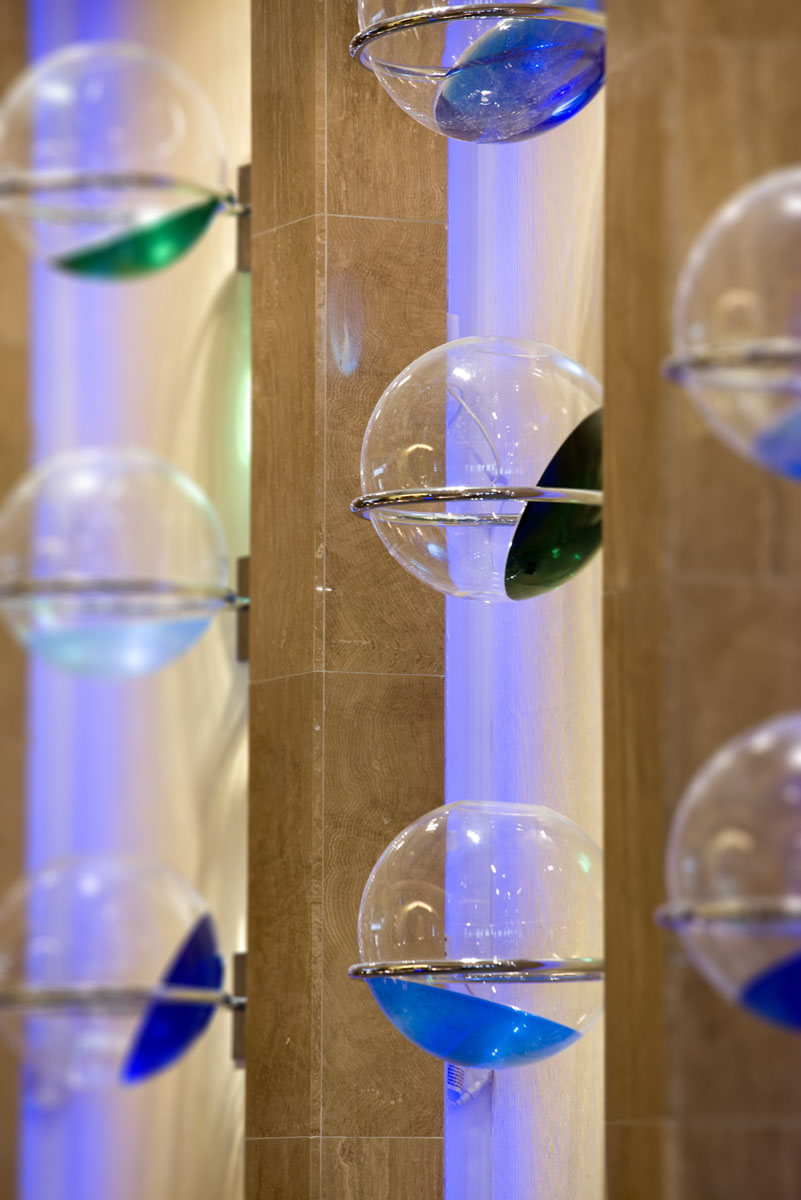CLICK ON IMAGE TO ENLARGE
Another tradition in trompe l’oeil involves imitating surfaces and textures – if you can’t find a sculptor or a stonemason, a painter might well do! Faux bois has been a popular sub-genre since the Renaissance; in Spanish it’s known as el trabajo rústico. Evans & Brown painted an entire “gentleman’s dressing room” for a San Francisco decorators’ showcase; the marquetry is done in intarsia which gives the illusion of shelves, cluttered drawers and closets full of clothes. Their faux marquetry is also on show in a reception area (under one of their murals) at Wynn Resorts in Las Vegas. In a Texas residence, elaborate illusory carving enlivens a coffered ceiling. For another commission, they painted an avian scene on teakwood doors.
CLICK ON IMAGE TO ENLARGE
For murals in an office park in Sacramento, the sidewalks outside proved worthy of imitation. Stones featured (authenic) petroglyphs. “There were miles of hallway with nothing on the walls, so we decided to paint the petroglyphs right on the walls,” Charley recalls. “People in the building weren’t very happy to see us defacing the walls. Then as soon as we were finished they were amazed. They’d go up and put their fingers on it, touch it, and try to rub against it.
For a restaurant then called, appropriately, Etrusca, Evans & Brown drew on an ancient technique called sgraffito, which dates at least to the Middle Ages. The surface is a built up impasto of pulverized marble, glazed to resemble an ancient bronze surface. The design is incised into the surface with a sharp tool, as if the artists had scratched a bronze surface. A painted screen originally made for the lobby of a downtown San Francisco hotel emulates a forged metal screen made by a consummate French artist-blacksmith, Edgar Brandt, whose work became popular in the 1920s. Tiffany glass? Also in their toolkit.
CLICK ON IMAGE TO ENLARGE
A couple of commissions defy easy classification, attesting to the two artists’ range of curiosity and imagination. There’s at least one project where the pair consented not just to work within the a school or genre, but in fact do an exact copy of the actual work. Reproducing Albert Bierstadt’s famed A Storm in the Rocky Mountains, Mt. Rosalie for a Colorado patron proved quite a challenge. (The 1863 original hangs in the Brooklyn Museum.) “It was the Ben-Hur spectacle of its day,” Charley recalls.
An installation in a Boston hotel is, unusually for Evans & Brown, really in three dimensions.
CLICK ON IMAGE TO ENLARGE

